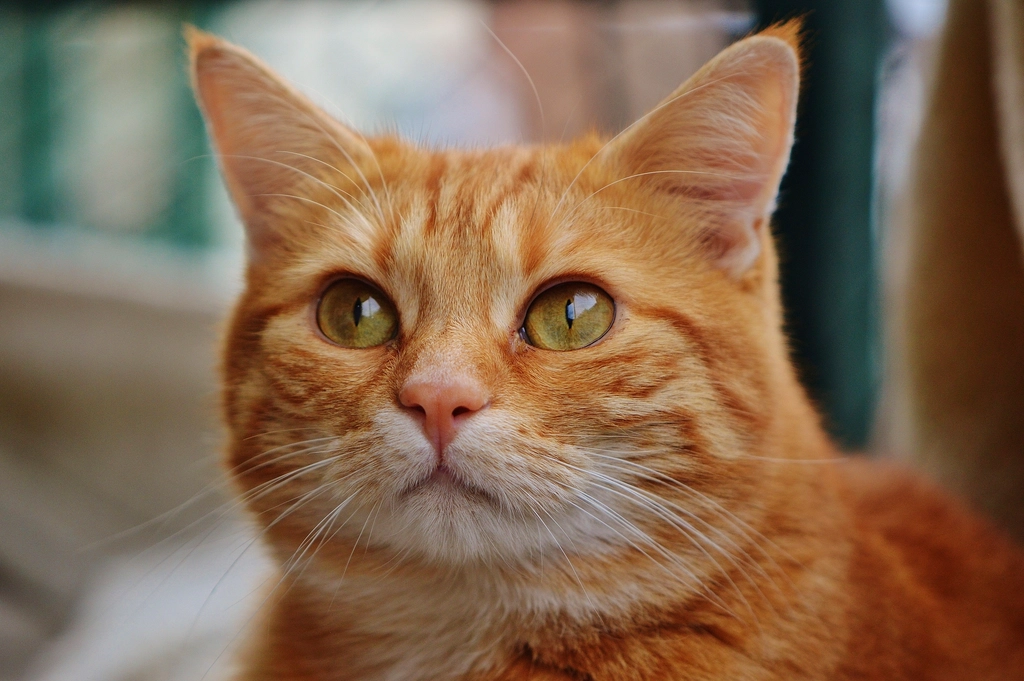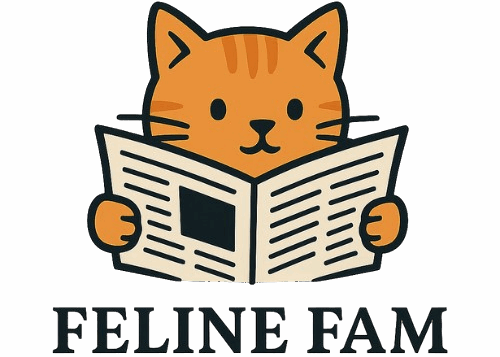Have you ever caught your cat staring at you and wondered, “What’s going on in that furry little head?” If you have, you’re not alone. Cats are famous for being mysterious, and their faces often look like blank slates. But what if I told you that your cat is actually an open book—if you know how to read the pages? Learning to recognize your cat’s facial expressions is like unlocking a silent language, and doing so can help you build a deeper, more loving bond. Today, we’ll dive into the world of whiskers, ears, and squinty eyes, and reveal how to read your cat’s face like a true feline whisperer. Let’s decode those mysterious looks once and for all!
The Importance of Observing Your Cat’s Face

Cats may not use words, but their faces can say plenty. Observing your cat’s face closely is the first step to understanding what they’re feeling. Their expressions change subtly, often in ways that go unnoticed unless you’re paying attention. By watching your cat in different situations—relaxed, playful, or stressed—you start to recognize patterns. This isn’t just about curiosity; it’s about safety and trust. A cat that feels understood is less likely to act out or get anxious. Plus, knowing their moods helps you react appropriately, whether that means giving space or offering comfort. Tuning into facial cues is a loving way to show your cat you care.
Why Cats Use Facial Expressions

Unlike dogs, cats are masters of subtlety. Their facial expressions are a quiet form of communication, shaped by their history as both predator and prey. Cats use their faces to share feelings with other cats, pets, or humans, especially when vocalizing might not be safe. For example, a slight narrowing of the eyes can signal affection to you or a warning to another cat. Expressions help them set boundaries or invite play. While some gestures are obvious, most are nuanced, requiring a keen eye and some practice to interpret. Understanding why cats use facial cues is the key to unlocking their secret world.
The Relaxed Cat Face

A relaxed cat face is a beautiful sight. The eyes are softly open or half-closed, showing that your cat feels safe and content. Their ears are upright but not rigid, and their whiskers point out to the sides, not forward or back. The mouth is closed, with no tension visible around the lips or nose. Sometimes, you might spot a gentle, slow blink—think of it as a kitty kiss. If you notice this expression, it’s a sign your cat trusts you and feels at home. Remember this look; it’s your baseline for recognizing when something’s off.
Recognizing a Happy or Content Cat

A happy cat face lights up a room, even if it’s subtle. You’ll see relaxed eyelids, sometimes with eyes closed in bliss during a sunny nap. The ears are naturally forward, not swiveling or pinned. Whiskers are at ease, spreading gently sideways, while the mouth area looks smooth and peaceful. A telltale sign of happiness is the slow blink—cats use this to show affection. If your cat gazes at you and blinks slowly, try blinking back; it’s a way of saying “I love you” in their language. A content cat might also knead with their paws, pairing facial cues with body language.
Signs of Fear or Anxiety in Cat Faces

Fear and anxiety show up quickly in a cat’s face. Wide-open eyes with large, dilated pupils are common when a cat feels threatened or scared. The ears may flatten sideways or backward, almost like airplane wings. Whiskers pull back tightly against the cheeks, and the mouth may open slightly, sometimes with panting or rapid breathing. You might see tension around the nose and mouth, and the fur on their face could appear puffed. It’s important to notice these signs early so you can help your cat feel safe. Even the calmest cats can get spooked, so being able to spot fear can prevent bigger problems.
Decoding the Angry or Agitated Cat

An angry cat face is impossible to miss once you know the signs. The eyes narrow into sharp slits, and pupils may be constricted. Ears rotate back or flatten tightly against the head, signaling their readiness to defend themselves. The whiskers fan forward, pointing in the direction of their focus—often the source of their irritation. The lips may curl, exposing teeth, or the mouth may open in a hiss. Their whole face looks tight, full of tension, and the nose might wrinkle. If you see this expression, it’s best to give your cat space to cool off.
The Curious Cat Expression

Curiosity is a cat’s superpower, and their face gives it away. When your cat is intrigued, their eyes widen, and pupils become slightly larger, but not as much as when scared. Ears perk up and tilt forward, ready to catch every sound. The whiskers stand forward, reaching toward whatever has caught their attention. The mouth is closed, but the face looks alert and focused. You might see this look when your cat spots a bird outside or hears a new noise. Curiosity often leads to play, so don’t be surprised if your cat pounces right after making this face.
Understanding the Playful Cat Face

A playful cat wears an expression that’s both excited and mischievous. Their eyes are often open wide, with pupils slightly dilated. Ears are forward or twitching, ready to react. Whiskers push forward, and the mouth may open a little in anticipation. Sometimes, a playful cat will make a ‘chirping’ sound, adding to the facial cues. This look often comes with a crouched body, wiggling haunches, and a twitching tail. If you spot this face, get ready for a game—your cat is inviting you to join in the fun.
The Sleepy or Contented Cat Look

When sleepiness strikes, your cat’s face becomes the picture of peace. The eyes are closed or barely open, and the eyelids droop heavily. Ears are relaxed, sometimes turning slightly to the side. Whiskers hang loosely, and the mouth area is completely soft. You might even notice a gentle purr vibrating through their chin. This expression is common after a meal or when your cat has found a sunny spot. Watching a sleepy cat is like seeing pure happiness in feline form, and it’s a reminder of how safe and loved they feel in your home.
Spotting Pain or Discomfort in Your Cat’s Face

Cats hide pain well, but their faces can reveal the truth if you know what to look for. The eyes may squint or close more than usual, and the pupils might be unusually large or small. Ears often turn sideways or flatten, and the whiskers pull back tightly. The mouth might droop, or you could see a grimace or furrowed brow. Sometimes, their whole face looks tense or pinched. If you notice these signs along with other changes like hiding or loss of appetite, it’s best to consult a veterinarian. Acting early can make a big difference for your cat’s health.
Reading Subtle Facial Changes

Not all facial expressions are dramatic. Sometimes, a tiny twitch of the whiskers or a slight blink can mean a lot. Subtle changes—like a brief narrowing of the eyes or a small shift in ear position—often tell the real story. These micro-expressions can signal everything from mild annoyance to quiet affection. Learning to spot these takes practice, but it’s worth it. Try observing your cat in different situations and jotting down what you see. Over time, you’ll pick up on their unique “dialect” and learn to respond in ways that strengthen your bond.
The “Slow Blink” and What It Means

The slow blink is one of the sweetest things a cat can do. When your cat slowly closes and opens their eyes while looking at you, it means they trust you completely. It’s almost like your cat is giving you a gentle hug with their eyes. You can return the gesture by slowly blinking back—it’s a silent way to say “I love you, too.” Many experts believe this is how cats communicate peace and friendship, both with humans and other cats. Try it next time you catch your cat’s gaze; you might be surprised by how they respond!
When Whiskers Tell a Story

A cat’s whiskers are like tiny mood antennas, constantly moving to reflect how they feel. When your cat is relaxed, whiskers sit neutrally to the sides. If your cat is curious or excited, the whiskers push forward, reaching toward the action. But if your cat is scared or angry, the whiskers pull flat against the cheeks. These movements are often paired with changes in ear and eye position, giving you a clearer picture of their mood. Whiskers are sensitive, and they can even pick up vibrations, so keep an eye on them during play or when something catches your cat’s attention.
The Role of Ears in Cat Expressions

Ears are one of the most expressive parts of a cat’s face. Upright and forward ears show interest and engagement, while sideways or “airplane” ears signal anxiety or fear. If your cat’s ears flatten against their head, it’s usually a sign of anger or extreme discomfort. Ears that flick back and forth may indicate curiosity or alertness to sounds. Paying attention to ear position alongside other facial cues helps you get a full picture of your cat’s feelings. Next time your cat hears a strange noise, watch their ears—they’ll tell you exactly how your cat feels about it.
How the Nose and Mouth Show Emotion

Believe it or not, a cat’s nose and mouth can say a lot. A relaxed mouth with soft lips means your cat feels safe. If the mouth is tightly closed or you see wrinkling around the nose, tension is building. A curled lip often comes before a hiss, signaling anger or fear. Some cats open their mouths slightly when they’re in pain or extremely anxious. Watch for changes like drooling or panting, which can indicate stress or illness. The area around the nose might also change color or look more flushed when your cat is upset or excited.
Putting It All Together: Reading the Whole Face

To truly understand your cat’s mood, look at their whole face—eyes, ears, whiskers, nose, and mouth—rather than focusing on just one feature. Each part gives you a clue, but together, they create the full story. For example, forward ears with wide eyes and forward whiskers signal curiosity, but if the whiskers and ears pull back while the eyes narrow, it’s likely fear or anger. Practice makes perfect. Spend time watching your cat in different situations and notice how their face changes. Soon, you’ll be able to read your cat’s expressions like a pro, and your bond will grow even stronger.
How to Respond to Your Cat’s Expressions

Understanding your cat’s face is just the beginning—the real magic happens when you respond. If your cat looks scared, give them space and a quiet place to retreat. When they’re playful, grab a toy and join the fun. If you spot signs of pain or discomfort, don’t hesitate to seek help. Responding with empathy shows your cat they can trust you. Over time, you’ll build a two-way conversation, even without words. Your cat will feel safer, happier, and more connected to you. It’s like learning a secret handshake, but fuzzier and a lot more rewarding.

Growing up traveling and experiencing new cultures and wonders, I have had a passion for nature, adventuring, photography, and videography. I am currently working towards a BSc in Biodiversity and Ecology at Stellenbosch University, and I hope to specialise in Marine Sciences one day.
Please send any feedback to Feedback@animalsaroundtheglobe.com






